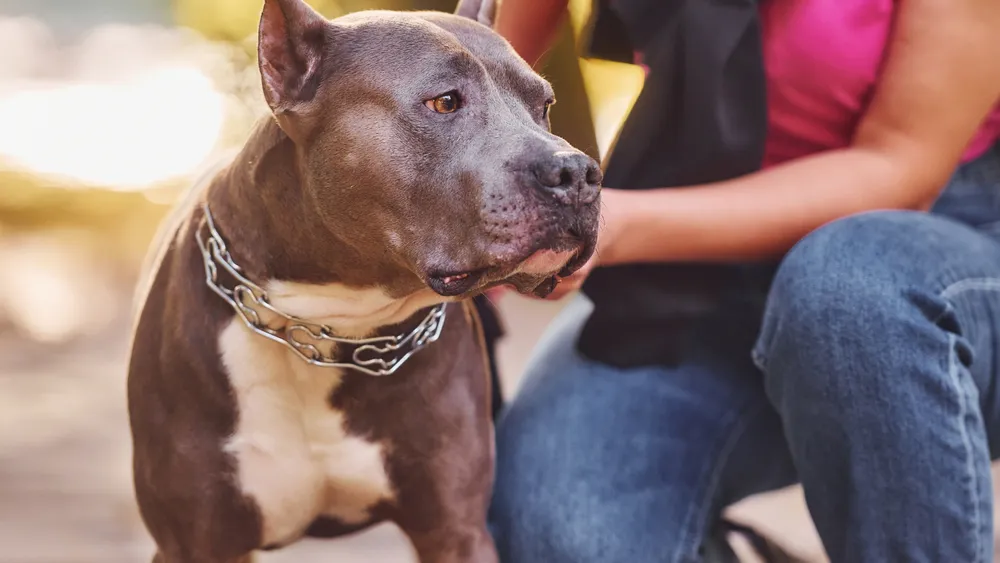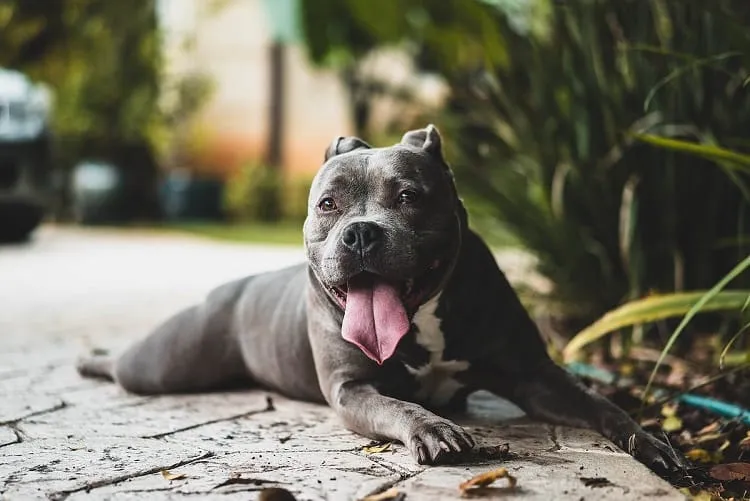Are you a proud Pitbull parent grappling with your pup's itchy, irritated skin? Look no further! Our comprehensive blog post is brimming with expert tips and treatments to help you soothe your Pitbull's skin allergies effectively. We understand how distressing skin issues can be for both you and your furry friend, and we're here to provide you with the knowledge and tools you need to tackle these challenges head-on. Get ready to dive into a wealth of information that will empower you to improve your Pitbull's skin health and overall wellbeing. Let's embark on this journey to happier, healthier skin for your beloved canine companion!

Understanding Pitbull Skin Allergies
Pitbulls, like many other breeds, are susceptible to a variety of skin allergies, which can significantly impact their quality of life. Identifying the common symptoms is crucial for effective treatment and relief. These symptoms can include persistent itching, redness of the skin, hives, localized swelling, and hair loss. Secondary symptoms may include infections due to relentless scratching and biting at irritated areas. According to a 2018 study published in the Veterinary Dermatology journal, atopic dermatitis, an inflammatory and chronic skin disease associated with allergies, is one of the most common reasons for veterinary visits among all dog breeds, including Pitbulls.
Differentiating between allergies and other skin conditions is essential as symptoms can be misleading and may overlap with those of infections, hormonal imbalances, or parasitic invasions. For example, mange caused by mites can mimic the signs of allergic reactions. Therefore, a thorough examination by a veterinarian is recommended to properly diagnose the underlying cause of skin issues.

Genetics also play a role in the susceptibility of Pitbulls to skin allergies. While the exact genetic markers are still under investigation, certain lineages within the breed appear to be more prone to allergic conditions. This suggests that heredity can be a significant factor in the prevalence of skin allergies within the breed. Breed predisposition to atopic dermatitis and other allergic conditions has been well-documented, highlighting the importance of understanding the genetic component of these issues.
Common allergens that affect Pitbulls include environmental triggers such as pollen, mold, dust mites, and grasses. Food allergies are also a concern, with some dogs reacting to specific proteins or grains in their diet. Contact allergies from bedding, plastics, and household chemicals can further complicate the picture. Each Pitbull may react differently to various allergens, so identifying the specific triggers is a crucial step in managing their condition.
As we delve deeper into the complexities of Pitbull skin allergies, it remains clear that careful observation and professional diagnosis are the first steps to providing relief for these affectionate dogs. The following section will explore the importance of veterinary intervention and the various diagnostic tools available to pinpoint the allergens responsible for a Pitbull's discomfort.

Diagnosis and Professional Care
When a Pitbull exhibits signs of skin allergies, the importance of seeking professional veterinary care cannot be overstated. Symptoms such as persistent scratching, redness of the skin, and hair loss require an accurate diagnosis to ensure proper treatment. Veterinary insight is crucial to differentiate between skin allergies and other conditions such as infections or parasitic infestations, which may present with similar signs. According to a study by the International Society of Canine Dermatology, allergies are among the most common dermatological issues faced by dogs, affecting approximately 10% of the canine population.
Once at the vet, allergy testing is often recommended to identify specific allergens triggering the dog's reactions. There are two primary types of tests used in veterinary medicine: intradermal tessting and serum allergy testing. Intradermal testing involves injecting small amounts of allergens into the dog's skin and observing the reactions, while serum testing measures the level of IgE antibodies in the blood when exposed to various allergens. While both methods have their advantages, intradermal testing is often considered the gold standard for diagnosing environmental allergies in dogs.
Understanding the approach a veterinarian takes in treating skin allergies is key to managing the condition effectively. Treatments may include avoidance of identified allergens, changes in diet, prescribed medications, and possibly immunotherapy. The vet may also recommend routine follow-ups to monitor the effectiveness of the treatment and adjust as necessary. The goal is to manage symptoms and improve the quality of life for the affected Pitbull.
It's important for owners to know when immediate veterinary care is needed. If a Pitbull's skin condition rapidly deteriorates, shows signs of infection, or if the dog develops systemic symptoms like vomiting or lethargy, these could be indications of a severe allergic reaction or a secondary complication requiring urgent attention. In the next section, we will delve into home remedies and management strategies that can complement the professional care provided by veterinarians and help alleviate the discomfort associated with skin allergies in Pitbulls.

Home Remedies and Management
Managing Pitbull skin allergies at home involves a multifaceted approach that focuses on reducing exposure to allergens and alleviating symptoms. A cornerstone of at-home care is establishing a regular bathing routine with shampoos formulated for sensitive skin. Bathing not only cleanses the skin but can also remove surface allergens that may trigger reactions. The use of hypoallergenic or oatmeal-based shampoos can soothe irritated skin and provide relief. A study published in the Veterinary Medicine and Science journal reported that frequent bathing with a hypoallergenic shampoo significantly reduced the number of environmental allergens on the skin of dogs.
Adjustments to diet are another critical aspect of home management for Pitbull skin allergies. An elimination diet, which involves feeding the dog a limited ingredient diet to rule out common food allergens, can be helpful in identifying dietary triggers. Incorporating essential fatty acids such as omega-3 and omega-6 into the diet has been shown to improve the skin barrier function and reduce inflammation, which may help alleviate allergy symptoms.
Natural supplements can also play a role in managing skin health. Supplements containing fish oil, flaxseed oil, or evening primrose oil are rich in essential fatty acids, which can promote healthy skin and coat. Probiotics are another supplement that can support a balanced immune response, potentially reducing allergic reactions. Adding these to a Pitbull's regimen should be done under the guidance of a veterinarian to ensure the correct dosage and to prevent any interactions with other medications.
Environmental modifications can help minimize a Pitbull's exposure to known allergens. This may involve using air purifiers to reduce airborne allergens, frequent cleaning of bedding and living spaces, and avoiding walking the dog in high-pollen areas during allergy season. By controlling the dog's environment, owners can significantly reduce the occurrence of allergen-induced skin flare-ups.
The next section, Topical and Medicinal Treatments, will delve into the pharmacological interventions available for Pitbulls suffering from skin allergies. This includes discussing the effectiveness and proper use of antihistamines, corticosteroids, medicated creams, and ointments in the treatment regimen, while also considering the potential side effects associated with long-term medication use.

Topical and Medicinal Treatments
Managing Pitbull skin allergies often requires a combination of topical and medicinal treatments. Antihistamines, for instance, are commonly used to alleviate itching and reduce inflammation. A study in the Journal of Veterinary Pharmacology and Therapeutics reported that antihistamines can be effective for controlling pruritus (itchiness) in dogs, though their efficacy varied among individual animals. Despite this variance, antihistamines remain a first-line defense for many veterinarians when addressing allergic reactions.
Corticosteroids are another cornerstone of allergy treatment, prized for their potent anti-inflammatory properties. They work by suppressing the immune response, thereby reducing symptoms such as redness, swelling, and itching. While corticosteroids can be incredibly effective, they should be used judiciously due to potential side effects, particularly with long-term use. These side effects can range from increased thirst and hunger to more serious issues like compromised immunity and liver damage.
For localized symptoms, medicated creams and ointments can be directly applied to the affected areas. These topical treatments may contain a variety of active ingredients including hydrocortisone, antibiotics, or antifungals, depending on the underlying cause of the skin allergy. The benefit of topical treatments lies in their ability to provide targeted relief with minimal systemic absorption, reducing the risk of side effects commonly associated with oral medications.
Adherence to the prescribed treatment regimen is crucial for the successful management of skin allergies. Pet owners must follow their veterinarian's instructions carefully, applying creams or administering medications at the recommended frequency and dosage. It is also important for owners to monitor their Pitbulls for any adverse reactions throughout the treatment period, reporting any concerns to their veterinarian promptly.
Potential side effects are a significant consideration for long-term medication use. For example, chronic use of corticosteroids can lead to conditions such as Cushing's disease, while overreliance on antibiotics may result in antimicrobial resistance. Owners must be vigilant and communicate with their vet to find the most effective and safe treatment plan for their Pitbulls. With the complexity of skin allergies, the transition to the next section becomes imperative, as we explore the advanced treatment options available for Pitbulls that require more than just the standard approach to care.

Advanced Treatment Options
For Pitbull owners dealing with the challenging management of their dog's skin allergies, advanced treatment options can be a beacon of hope. One such progressive approach is allergen-specific immunotherapy, commonly referred to as desensitization therapy. This long-term treatment involves exposing the dog to gradually increasing doses of the allergen, with the aim of desensitizing the immune system. Studies show that about 60 to 70% of dogs have a good to excellent response to this treatment. Allergy shots are the traditional form, while sublingual oral drops offer a more recent and less invasive alternative.
Immunomodulatory drugs represent another frontier in managing canine atopic dermatitis, a prevalent skin allergy in Pitbulls. These drugs work by altering the immune system's response to allergens, thereby reducing inflammation and itchiness. Cyclosporine, for example, has been widely used for its efficacy in controlling symptoms of atopic dermatitis in dogs. While these medications can offer relief, they also require careful monitoring due to potential side effects such as gastrointestinal upset and increased susceptibility to infections.
Among the cutting-edge treatments gaining traction in the veterinary community are Cytopoint injections and Apoquel tablets. Cytopoint is a biological therapy that targets and neutralizes canine interleukin-31 (IL-31), a key itch-inducing cytokine in dogs. This injection can provide itch relief that lasts for 4 to 8 weeks, making it a convenient option for owners. On the other hand, Apoquel is a selective Janus kinase inhibitor that offers rapid reduction of itch and inflammation, with the onset of action as quick as 4 hours and control within 24 hours.
Monitoring your Pitbull's response to these advanced treatments is crucial. Veterinarians will typically recommend regular check-ins to assess the efficacy of the treatment and adjust dosages as necessary. This proactive approach ensures that the Pitbull receives the most appropriate care while minimizing any adverse effects. The next section will delve into how prevention strategies and long-term care can further support the management of skin allergies in Pitbulls.

Prevention and Long-Term Care
Preventing skin allergy flare-ups in Pitbulls is a multifaceted approach that requires diligent care and attention to detail. Regular grooming is paramount in maintaining the health of a Pitbull's skin and coat. By keeping the coat clean and free of irritants, owners can significantly reduce the frequency and severity of allergic reactions. Brushing not only helps to remove potential allergens like pollen or dust but also distributes natural skin oils which protect the skin barrier. A study published in the "Journal of Veterinary Medicine and Animal Health" found that regular grooming could play a crucial role in reducing skin problems in dogs.
In addition to grooming, employing smart technology can enhance a Pitbull owner's ability to monitor their pet's environment and activity. The Fi Smart GPS Tracking Dog Collar is one such device that allows owners to track their dog’s location and monitor activity levels. By analyzing the data collected, owners can identify patterns that may point to environmental triggers causing allergic reactions. For instance, owners can determine if flare-ups are more common after visiting a particular park or during certain times of the year, and adjust their routines accordingly.
Maintaining a clean living environment is vital for Pitbulls with skin allergies. This involves regular cleaning of the home, including floors and surfaces where allergens can accumulate. Moreover, washing the dog's bedding, toys, and accessories can help eliminate dust mites, mold spores, and other common allergens. Air purifiers with HEPA filters can also be beneficial in capturing airborne particles that might contribute to the dog's allergies.
Finally, routine veterinary check-ups are crucial for the long-term management of skin allergies in Pitbulls. Regular visits allow veterinarians to assess the dog's skin condition and to adjust treatment plans as necessary. These check-ups also provide an opportunity to discuss the effectiveness of prevention strategies and to tweak them for better results. Establishing a rapport with a veterinarian can lead to tailored advice and care that aligns with the dog's specific needs, leading to a better quality of life for the Pitbull. The next section will explore the transition from prevention to addressing symptoms as they arise, delving into the identification of common symptoms of skin allergies in Pitbulls.

Conclusion
Managing your Pitbull's skin allergies may seem daunting, but with the comprehensive insights and practical tips provided in this guide, you're well-equipped to alleviate your pup's discomfort and pave the way for healthier skin. From understanding the causes to exploring advanced treatment options, we've covered the essential steps to help you navigate this journey with confidence. Always remember that your veterinarian is an invaluable partner in this process, offering personalized advice and professional care tailored to your dog's unique needs.
We hope this guide has empowered you with the knowledge to better care for your Pitbull's skin allergies. Your dedication to your pet's wellbeing is commendable, and with the right approach, you can achieve significant improvements in their quality of life. Thank you for taking the time to read our blog post. May the road ahead be filled with many itch-free, happy days for you and your furry friend!
FAQs
- What are the common symptoms of skin allergies in Pitbulls?
- Symptoms include persistent itching, redness, hives, swelling, hair loss, and secondary infections due to scratching.
- How can I differentiate between allergies and other skin conditions in my Pitbull?
- A thorough examination by a veterinarian is essential, as symptoms can overlap with infections, hormonal imbalances, or parasites.
- Are Pitbulls genetically predisposed to skin allergies?
- Yes, genetics can play a role, with certain lineages more prone to allergic conditions, though specific genetic markers are still being researched.
- What are common allergens that affect Pitbulls?
- Environmental triggers like pollen, mold, dust mites, grasses, food ingredients, and contact allergens from household items.
- What should I do if my Pitbull shows signs of skin allergies?
- Seek professional veterinary care for an accurate diagnosis and appropriate treatment, which may include allergy testing.
- Can regular grooming help manage my Pitbull's skin allergies?
- Yes, regular bathing with hypoallergenic shampoos can remove allergens and soothe irritated skin, but frequency and products should be discussed with a vet.
- Are there any advanced treatment options for severe skin allergies in Pitbulls?
- Allergen-specific immunotherapy, immunomodulatory drugs like Cyclosporine, Cytopoint injections, and Apoquel tablets are advanced options for managing atopic dermatitis and severe allergies.
- How can I prevent skin allergy flare-ups in my Pitbull?
- Regular grooming, maintaining a clean environment, using air purifiers, and routine veterinary check-ups can help prevent flare-ups.
- What role does diet play in managing skin allergies in Pitbulls?
- An elimination diet can help identify food allergens, and supplements rich in essential fatty acids may improve skin health and reduce inflammation.
- When should I seek immediate veterinary care for my Pitbull's skin condition?
- If the skin condition rapidly deteriorates, shows signs of infection, or if systemic symptoms like vomiting or lethargy develop, seek urgent veterinary care.